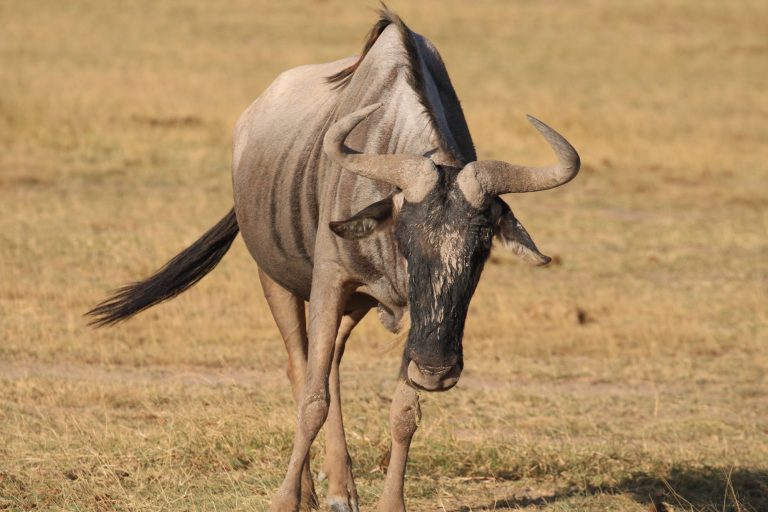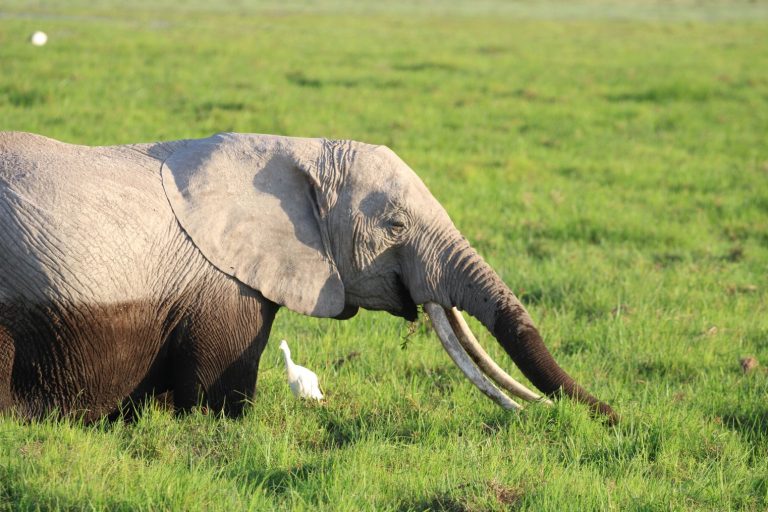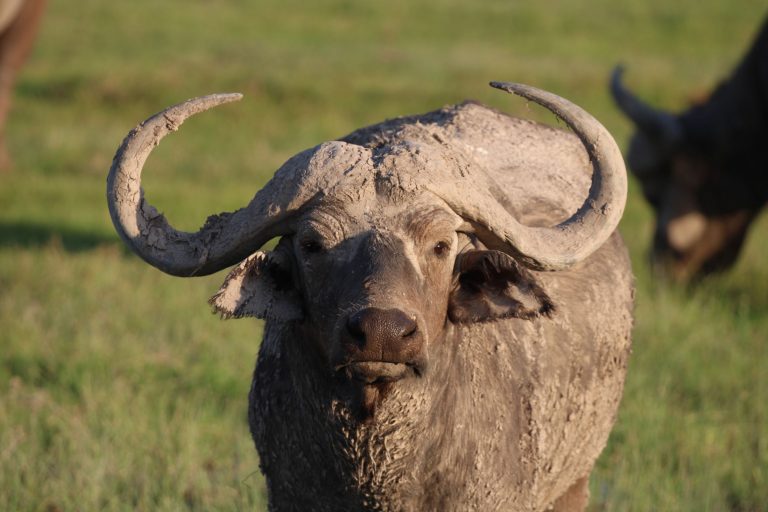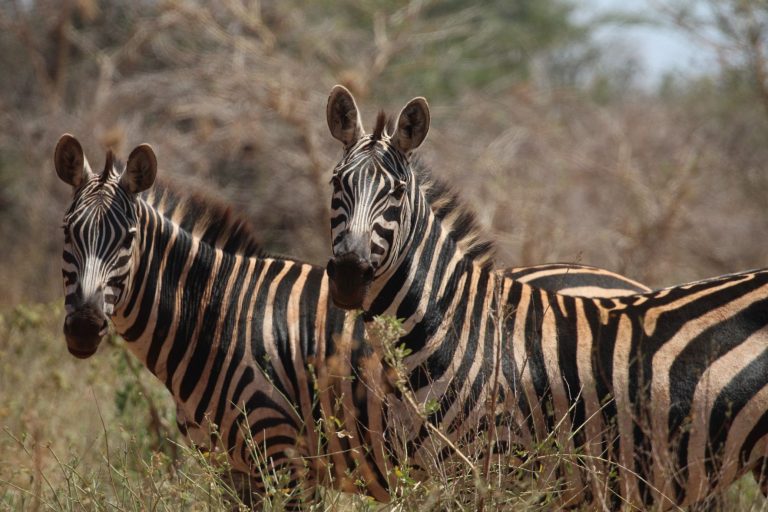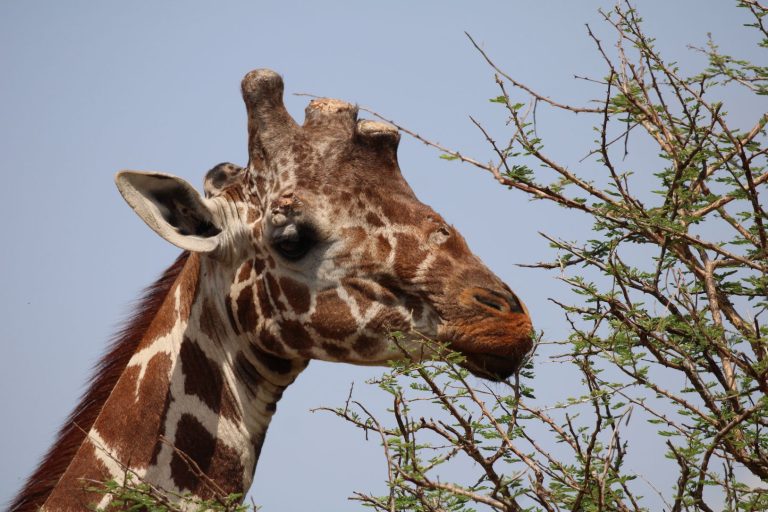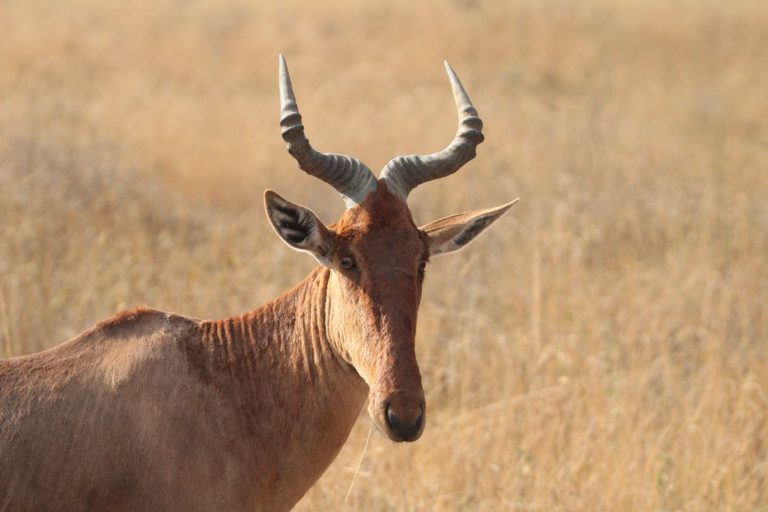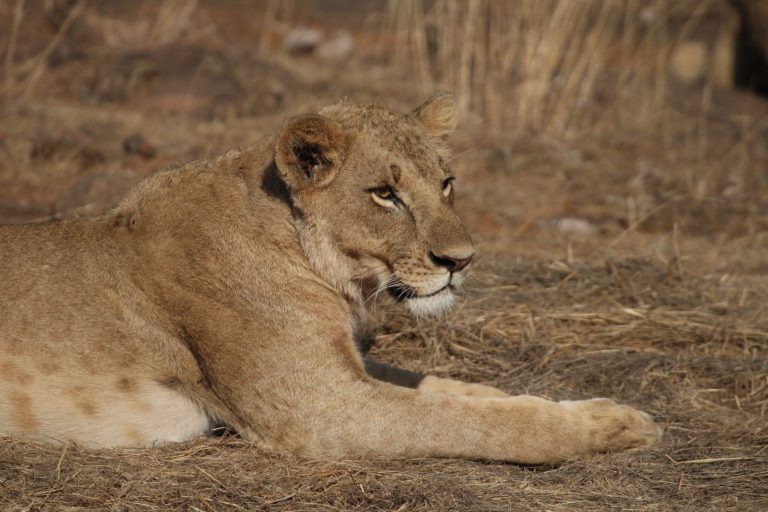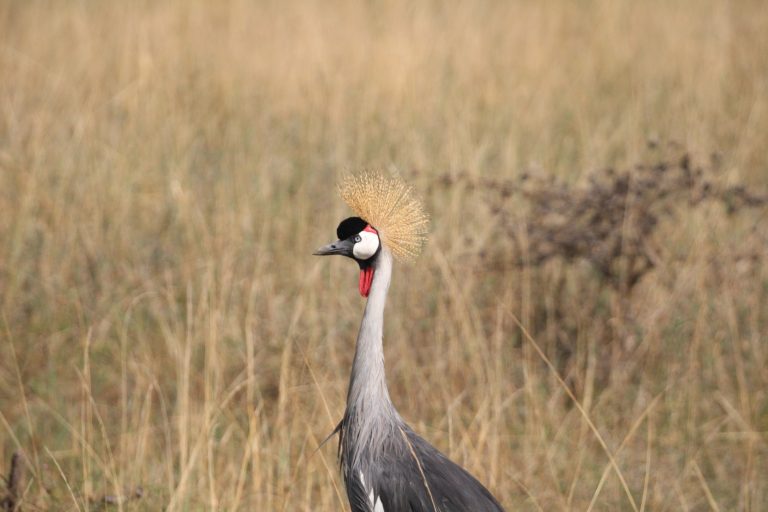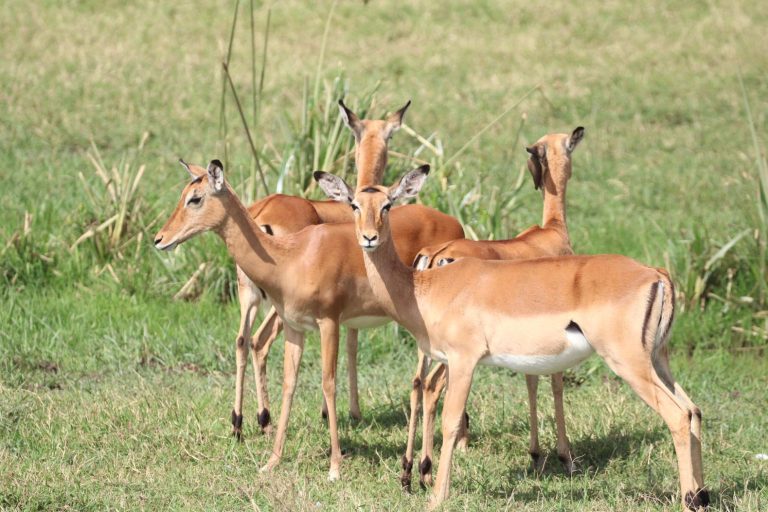Lions, elephants, and giraffes: The role of hero species
Let’s hear it for the superstars! Flagship species can transform conservation. Freshly back from a trip to Kenya, our Conservation Projects Liaison and Communications Officer, Joe Hedges, considers how key wild animals act as ambassadors for their habitat.
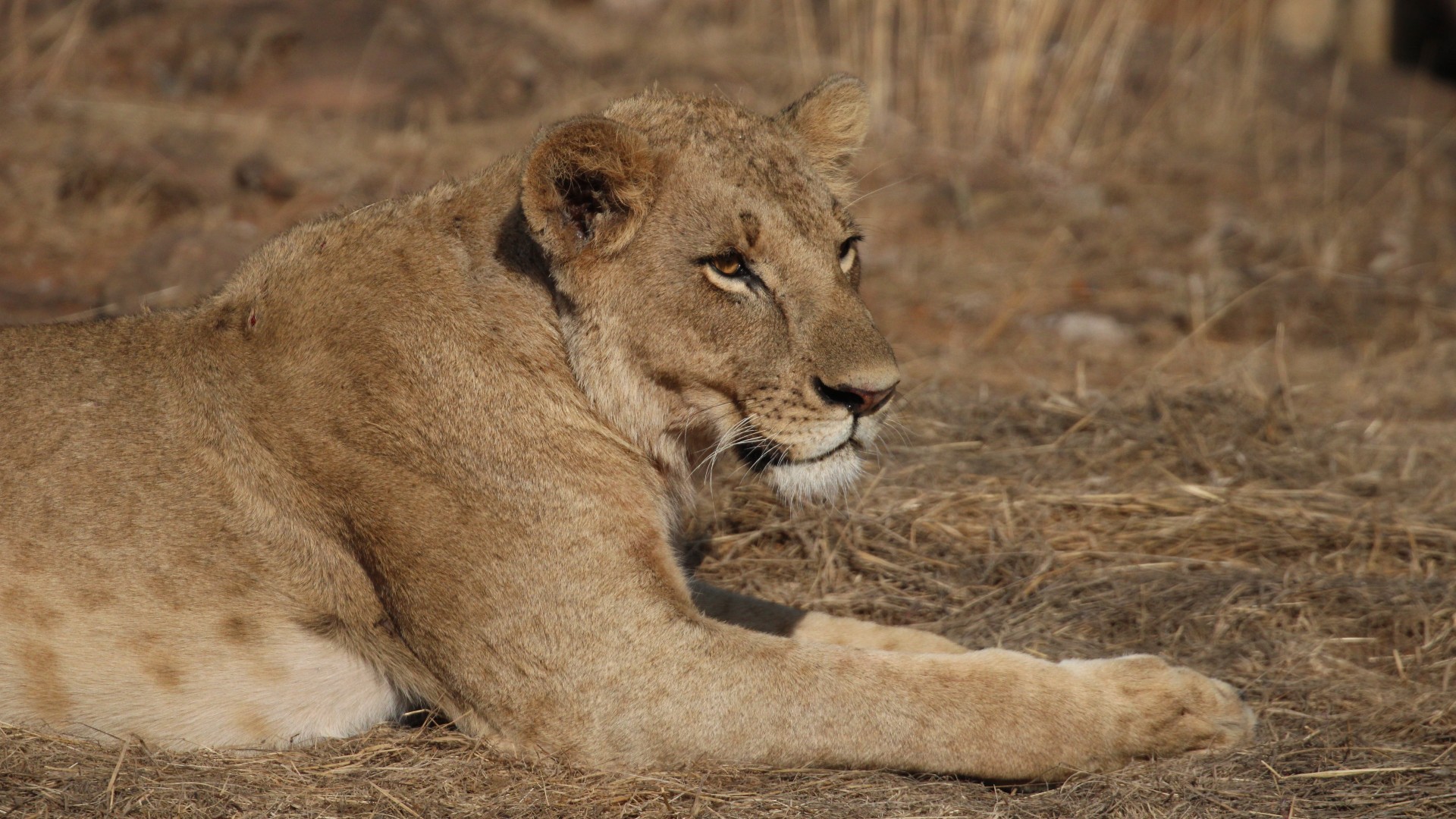
A wild lioness (c) Joe Hedges
We’re well-known for our efforts to protect ‘hero’ species such as lions, elephants, and tigers. But, are these the only species to benefit from our work? In this blog, we explore the role of these charismatic and widely recognised figurehead species in conservation and the wider impacts of our programmes to protect wild animals and their habitats.

Conservation Projects Liaison and Communications Officer, Joe Hedges
Born Free’s conservation programmes are often centred around the conservation of one or two hero species. In Kenya, our Pride of Meru and Pride of Amboseli programmes focus on lions, whereas Saving Meru’s Giants focuses on elephants and giraffes. Over in Cameroon, the Guardians of Dja programme focuses on chimpanzees and gorillas, whereas tigers are the centrepiece for the Satpuda Landscape Tiger Partnership. However, the positive impacts of these programmes extend far beyond these key species: all our conservation programmes cover vast ecosystems, so the positive impacts are not just for lions, tigers, and chimpanzees, but for jackals, hyenas, pangolins, sloth bears, Indian gaur (or ‘Indian bison’), zebra, wildebeest, birds, plants, trees and countless other species.
The focal ‘hero’ species of our programmes (sometimes referred to as flagship species) are charismatic and recognisable species such as lions and elephants – well known and loved around the world. These animals capture our imagination and can hook us into learning and engaging more in conservation. At Born Free, we also focus on these animals because each and every individual has a story to tell, and it is our mission that every wild animal is treated with respect and compassion, so they can live their life free from the threat of harmful human exploitation.
Many of our hero animals also serve as ‘umbrella species’. These are the powerhouses of conservation – they ‘represent’ their ecosystems, so by targeting our efforts at umbrella species, indirect benefits are delivered to a whole host of other animals and plants in the ecosystem under their ‘umbrella’. Umbrella species usually require vast ranges that overlap with a diversity of habitats, so by protecting their habitat, the habitat for numerous other species that live in the same landscape will also be protected.
Take Amboseli for example, where Born Free has built almost 400 ‘predator-proof bomas’. This initiative aims to prevent lions attacking and killing livestock by our team working with local communities to reinforce traditional enclosures, thereby reducing retaliatory killings, and helping enable coexistence with lions. But, do predator-proof bomas only help lion conservation? Absolutely not! Our predator-proof bomas also help reduce conflict and help local people to coexist with hyenas, leopards, cheetahs, jackals, and caracals. These animals can also predate livestock but, do not tend to be persecuted in the same way as lions. So, in this way, lions are the hero for conservation in Amboseli, enabling coexistence between people and a whole range of carnivores under their umbrella.
Similarly in Meru, the benefits of our conservation programmes are felt by many wild animals, not only the select hero species. Our desnaring work for example – collecting illegal snares set to trap wild animals for food – not only removes the threat of snares from large areas of habitat for elephants and giraffe, but also for many other wildlife species such as lions, wildebeest, zebra and even birds, to name a few.

Wild zebra (c) Joe Hedges
In Cameroon, our work with local communities to protect chimpanzees and gorillas and their habitat – the Dja biosphere, also benefits a whole host of species. These include forest elephants, pangolins, leopards, buffalo, bongo (large antelope), as well as many other primates, reptiles and birds, who all live under the umbrella of these great apes – both chimpanzees and gorillas have crucial roles in dispersing seeds and increasing the diversity of plant species and habitats in their environment.
The tiger, a symbol across the entire world of power and majesty, is perhaps one of the most inspirational hero species. Born Free has worked with local organisations and communities to protect tigers in India for almost 20 years. The conservation of tigers, who have can ranges of almost 115mile2 (300km2), helps protect vast contiguous stretches of habitat and indirectly provides habitat for pangolins, sloth bears, Indian gaur and a myriad other species also living in the landscape.
The benefits delivered by umbrella species are not restricted just to non-human animals. For example, elephants – like all the umbrella species we have already mentioned, range over vast areas and cover many habitat types. Like the great apes, elephants modify their environment through their feeding and trampling behaviour, and their dung – which gets broken down by dung beetles, helps return nutrients to the soils, increasing the diversity of plant species and providing habitats and food for numerous other species and even the people living in the landscape. Furthermore, elephants and the other species they help protect often generate significant revenue for local communities via tourism. The effects of elephants as an umbrella species therefore extend to people by providing a source of soil nutrients, promoting tree growth which helps mitigate climate change and increasing revenue from tourism.
As you can tell, although we focus on hero species at Born Free, we care deeply about the human communities living alongside these animals as well as the stunning diversity of all living beings in our natural world. Conservation is truly a team effort and our hero species are part of that team!
Check out our wildlife gallery (below) from the conservation team’s recent trip to Kenya.
Kenyan wildlife gallery
